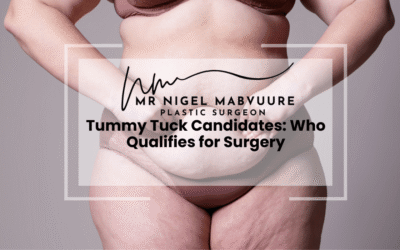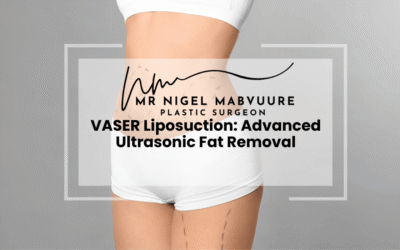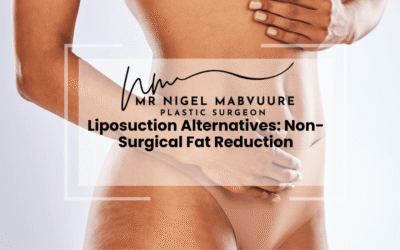Mummy Makeover After 40
- There is no specific age limit for Mummy Makeover surgery; suitability depends on overall health rather than chronological age
- Women over 40 may require customised surgical approaches to address both post-pregnancy changes and age-related concerns
- Recovery typically takes 3-4 weeks for basic activities, with complete healing occurring over 6-12 months for mature patients
- Decreased skin elasticity and slower metabolism may affect results and recovery, but excellent outcomes are still achievable
- Comprehensive pre-operative health assessment is particularly important for patients over 40
- Finding a surgeon with specific experience treating mature patients ensures age-appropriate, natural-looking results
- Realistic expectations and proper preparation are essential for successful outcomes in midlife Mummy Makeover procedures
Table of Contents
- Understanding Mummy Makeover Surgery for Women Over 40
- How Age Affects Your Mummy Makeover Results and Recovery
- Is 40 Too Old for a Mummy Makeover? Debunking Common Myths
- Key Considerations for Mature Patients Seeking Body Transformation
- Customising Your Mummy Makeover Procedures for Midlife Bodies
- Recovery Timeline and Expectations for Cheshire Patients Over 40
- Finding the Right Plastic Surgeon for Your Mature Mummy Makeover
Understanding Mummy Makeover Surgery for Women Over 40
A Mummy Makeover is a personalised combination of surgical procedures designed to address the physical changes that occur following pregnancy and childbirth. For women over 40 in Cheshire considering this transformative journey, understanding the nuances of these procedures becomes particularly important as our bodies respond differently to surgery with age.
The typical Mummy Makeover package includes a combination of breast surgery (augmentation, lift, or reduction), abdominoplasty (tummy tuck), and often liposuction to target stubborn fat deposits. For mature patients, these procedures may need to be adapted to address not only post-pregnancy changes but also the natural effects of ageing that become more pronounced after 40.
Women in their 40s often experience additional concerns such as decreased skin elasticity, hormonal changes that affect fat distribution, and tissue laxity that may not have been present in their younger years. A comprehensive Mummy Makeover for this age group takes these factors into account, potentially incorporating additional procedures like an extended tummy tuck to address more significant skin laxity or a more extensive breast lift to counteract the effects of both pregnancy and age-related changes.
In Cheshire, mature patients seeking Mummy Makeover surgery benefit from a thorough consultation that evaluates their unique physical condition, medical history, and aesthetic goals. This personalised approach ensures that the surgical plan addresses both post-pregnancy concerns and age-related changes for optimal, natural-looking results.
How Age Affects Your Mummy Makeover Results and Recovery
Age plays a significant role in both the outcomes and recovery process following a Mummy Makeover. For Cheshire patients over 40, understanding these age-related factors is crucial for setting realistic expectations and preparing adequately for the surgical journey.
The most notable age-related change affecting surgery is diminished skin elasticity. After 40, our skin naturally produces less collagen and elastin, the proteins responsible for skin’s firmness and ability to “snap back” after stretching. This means that while excellent results are still achievable, the skin’s response to surgical tightening may differ from that of younger patients. Your surgeon will account for this by potentially removing more excess skin and using techniques specifically designed for mature tissue.
Metabolic changes also impact recovery and results. A slower metabolism means healing may take longer, and maintaining results through weight management might require more diligent effort. Hormonal fluctuations, particularly for women approaching or experiencing perimenopause, can affect fat distribution and tissue quality, sometimes necessitating adjustments to the surgical approach.
Recovery timelines typically extend slightly for patients over 40. While a younger patient might return to light activities within 2-3 weeks, mature patients often benefit from allowing 3-4 weeks for the same level of recovery. The body’s natural healing mechanisms work more efficiently in younger patients, so patience becomes especially important for those undergoing a Mummy Makeover after 40.
Despite these considerations, many surgeons report that mature patients often achieve highly satisfying results, particularly when the surgical plan is tailored to address both post-pregnancy changes and age-related concerns simultaneously. The key lies in comprehensive pre-operative planning and realistic expectations about both results and recovery timelines.
Is 40 Too Old for a Mummy Makeover? Debunking Common Myths
One of the most persistent myths surrounding Mummy Makeover surgery is that there’s an arbitrary age limit beyond which the procedure becomes inappropriate or unsafe. This simply isn’t true. There is no specific age cutoff for Mummy Makeover procedures, and many women in their 40s, 50s, and even 60s undergo these transformative surgeries with excellent results.
The misconception that “40 is too old” likely stems from outdated notions about plastic surgery and recovery. Modern surgical techniques, improved anaesthesia protocols, and enhanced recovery programmes have made these procedures safer and more accessible for patients of various ages. What matters most is not your chronological age but your physiological age—your overall health status, fitness level, and ability to heal.
Another common myth is that results won’t last as long for mature patients. While it’s true that the ageing process continues after surgery, a Mummy Makeover can effectively “reset the clock,” providing long-lasting improvements that age naturally with you. Many Cheshire patients over 40 report that their results remain satisfying for many years, particularly when they maintain a stable weight and healthy lifestyle.
Some women worry that recovery will be prohibitively difficult after 40. While recovery may take somewhat longer than for younger patients, the difference is often modest. Most mature patients return to work within 2-3 weeks and resume full activities within 6-8 weeks—only slightly longer than younger counterparts.
Perhaps the most harmful myth is that seeking aesthetic improvement after 40 is somehow vain or inappropriate. This outdated perspective fails to recognise that feeling confident in one’s body contributes significantly to overall wellbeing and quality of life at any age. Mature Mummy Makeover patients frequently report improvements in self-confidence, physical comfort, and even motivation to maintain healthy habits following their procedures.
Key Considerations for Mature Patients Seeking Body Transformation
For Cheshire women over 40 contemplating a Mummy Makeover, several unique considerations should inform your decision-making process. These factors help ensure you achieve optimal results while minimising risks associated with midlife body transformation.
Health assessment becomes particularly crucial for mature patients. A comprehensive pre-operative evaluation should include thorough cardiovascular screening, hormone level assessment, and bone density consideration, especially if you’re approaching or experiencing perimenopause. These evaluations help identify any underlying conditions that might affect surgery or recovery.
Realistic timeline planning is essential. As a mature patient, you’ll likely need to allow for a slightly extended recovery period. Plan for 3-4 weeks away from demanding work responsibilities and arrange additional support for household and childcare duties, particularly if you have younger children still at home.
Nutritional optimisation plays a more significant role for patients over 40. Your surgeon may recommend specific pre-operative nutritional protocols to enhance healing capacity. This might include increasing protein intake, ensuring adequate vitamin D and calcium levels, and possibly supplementing with specific nutrients known to support tissue repair.
Hormonal status assessment is another key consideration. Perimenopause and menopause can affect tissue quality, healing capacity, and fat distribution. Discussing your hormonal status with both your plastic surgeon and gynaecologist can help develop a surgical plan that accounts for these factors.
Lifestyle modification may be recommended before surgery. Smoking cessation becomes even more critical for mature patients, as smoking compounds age-related reductions in healing capacity. Similarly, optimising fitness levels prior to surgery can significantly enhance recovery outcomes for women over 40 seeking a Mummy Makeover.
Customising Your Mummy Makeover Procedures for Midlife Bodies
A successful Mummy Makeover for patients over 40 requires thoughtful customisation to address both post-pregnancy changes and age-related concerns. In Cheshire, experienced plastic surgeons recognise that midlife bodies have unique needs that influence procedural choices and surgical techniques.
For breast procedures, the approach often differs for mature patients. While younger women might achieve desired results with breast augmentation alone, women over 40 typically benefit from combining augmentation with a lift (mastopexy) to address both volume loss and tissue laxity. Some mature patients may opt for a more modest implant size or even choose fat transfer augmentation for a more natural approach that avoids the long-term maintenance associated with implants.
Abdominoplasty techniques are frequently modified for midlife patients. Extended tummy tucks that address flanks and lower back areas may be recommended to create more harmonious contours. Surgeons often employ progressive tension sutures and advanced muscle repair techniques to optimise results for mature abdominal tissues that have experienced both pregnancy and age-related changes.
Liposuction approaches are tailored to account for age-related changes in fat distribution and skin elasticity. Surgeons may use more conservative fat removal techniques combined with skin-tightening technologies like radiofrequency-assisted liposuction to address the diminished skin recoil typical in patients over 40. Areas like the upper arms, inner thighs, and back might be included in the treatment plan to address common midlife concern areas.
Additional procedures are often incorporated for comprehensive rejuvenation. These might include labiaplasty to address genital changes from childbirth that can become more bothersome with age, or non-surgical skin treatments to enhance overall skin quality and address textural changes not corrected by surgery alone.
The staging of procedures may differ for mature patients. While younger women might undergo all Mummy Makeover components in a single operation, surgeons sometimes recommend splitting the procedures for patients over 40 to reduce operative time and minimise recovery challenges.
Recovery Timeline and Expectations for Cheshire Patients Over 40
Understanding the recovery process is crucial for Cheshire patients planning a Mummy Makeover after 40. While individual experiences vary, mature patients should prepare for a somewhat extended healing journey compared to younger counterparts.
The immediate post-operative period (1-7 days) typically involves more significant discomfort and restricted mobility. Mature patients often report that pain management is particularly important during this phase. Your surgeon will likely prescribe a carefully tailored pain management protocol that may include both medication and non-pharmaceutical approaches like cold therapy. During this first week, you’ll need dedicated assistance with daily activities and should focus entirely on rest and gentle movement.
The early recovery phase (1-3 weeks) brings gradual improvements in comfort and mobility. By the end of the first week, most patients over 40 can manage basic self-care but still require help with household responsibilities. Light walking is encouraged to promote circulation, but lifting restrictions remain strict—nothing heavier than 2-3 kg. Many mature patients find that fatigue is particularly pronounced during this phase, necessitating additional rest periods throughout the day.
The intermediate recovery phase (3-6 weeks) sees significant improvements in energy and comfort. Most Cheshire patients over 40 can return to non-physical work around 3-4 weeks post-surgery, though part-time arrangements may be beneficial initially. Driving typically resumes around the 3-week mark, once pain medication is no longer needed. Compression garments remain important during this phase to support optimal healing and contour development.
The advanced recovery phase (6-12 weeks) brings a return to most normal activities. By 6-8 weeks, most exercise restrictions are lifted, though mature patients are advised to resume strenuous activities gradually. Swelling continues to resolve during this period, though patients over 40 should expect some residual swelling to persist longer than in younger patients—sometimes up to 6 months for complete resolution.
Long-term recovery continues beyond the 3-month mark. Final results typically emerge between 6-12 months post-surgery, as tissues fully settle and scars mature. Mature patients often benefit from scar management protocols and may require longer use of supportive garments to achieve optimal long-term results.
Finding the Right Plastic Surgeon for Your Mature Mummy Makeover
Selecting the right surgeon is perhaps the most critical decision for Cheshire women considering a Mummy Makeover after 40. The unique considerations of mature patients make surgical expertise and specialisation particularly important factors in achieving safe, natural-looking results.
Begin by verifying credentials and specialisation. Look for surgeons who are fully accredited with the General Medical Council (GMC) and hold membership in respected professional bodies like the British Association of Aesthetic Plastic Surgeons (BAAPS) or the British Association of Plastic, Reconstructive and Aesthetic Surgeons (BAPRAS). Beyond these basic qualifications, seek surgeons who demonstrate specific experience with mature patients and post-pregnancy body restoration.
Experience with age-appropriate results is crucial. Review before-and-after galleries with particular attention to results in patients of similar age and body type to yours. The best surgeons for mature Mummy Makeovers create results that look natural and appropriate rather than attempting to recreate a youthful appearance that might appear incongruous.
Comprehensive health assessment protocols are another indicator of a surgeon well-suited to mature patients. The consultation process should include thorough medical history review, appropriate pre-operative testing, and detailed discussion of how age-related factors might influence your surgical plan and recovery.
Communication style and patient education approach matter significantly. The right surgeon will take time to explain how procedures might be modified to address age-related concerns, set realistic expectations about results and recovery, and demonstrate respect for your goals and concerns as a mature patient.
Facility accreditation and safety protocols should be carefully evaluated. For patients over 40, surgery in a fully accredited hospital or surgical centre with overnight stay capabilities provides an additional safety margin. Enquire about the anaesthesia team’s experience with mature patients and the facility’s emergency response capabilities.
Finally, consider the comprehensive care approach. The ideal practice for mature Mummy Makeover patients offers robust pre-operative optimisation support, comprehensive post-operative care, and long-term follow-up to ensure lasting results. Many Cheshire patients find that surgeons who take a holistic approach to aesthetic surgery—considering nutrition, fitness, and overall wellness—achieve the most satisfying outcomes for women pursuing body transformation after 40.
Frequently Asked Questions
Is 40 too old for a mummy makeover?
No, 40 is not too old for a mummy makeover. There is no specific age cutoff for these procedures. What matters most is your overall health, fitness level, and ability to heal rather than your chronological age. Many women in their 40s, 50s, and even 60s undergo mummy makeovers with excellent results. Modern surgical techniques and improved recovery protocols have made these procedures safe and effective for suitable candidates of various ages.
How long is recovery from a mummy makeover for women over 40?
Recovery from a mummy makeover for women over 40 typically takes slightly longer than for younger patients. The immediate post-operative period lasts 1-7 days with significant discomfort. Most mature patients can return to non-physical work around 3-4 weeks post-surgery, resume driving at the 3-week mark, and return to most normal activities by 6-8 weeks. Complete resolution of swelling and final results may take 6-12 months, somewhat longer than for younger patients.
What procedures are typically included in a mummy makeover for women over 40?
A mummy makeover for women over 40 typically includes breast surgery (often combining augmentation with a lift), abdominoplasty (possibly an extended tummy tuck to address flanks and lower back), and liposuction with potential skin-tightening technologies. Additional procedures might include labiaplasty and non-surgical skin treatments. For mature patients, procedures are often customized to address both post-pregnancy changes and age-related concerns like decreased skin elasticity and hormonal fat redistribution.
How does age affect the results of a mummy makeover?
Age affects mummy makeover results primarily through decreased skin elasticity, as skin produces less collagen and elastin after 40. This means surgeons often remove more excess skin and use techniques specifically designed for mature tissue. Hormonal changes can affect fat distribution and tissue quality, while metabolic changes may impact healing and long-term results maintenance. Despite these considerations, mature patients can achieve highly satisfying results when procedures are properly tailored to address age-related concerns.
What health considerations are important for women over 40 considering a mummy makeover?
Women over 40 considering a mummy makeover should undergo comprehensive health assessments including cardiovascular screening, hormone level assessment, and bone density evaluation. Nutritional optimization becomes crucial, with potential recommendations for increased protein intake and specific supplements to support healing. Hormonal status assessment helps develop appropriate surgical plans, while lifestyle modifications like smoking cessation and fitness optimization are particularly important for enhancing recovery outcomes in mature patients.
Should mummy makeover procedures be done all at once or staged for patients over 40?
For patients over 40, surgeons sometimes recommend staging mummy makeover procedures rather than performing them all at once. This approach can reduce operative time, minimize recovery challenges, and decrease overall surgical stress on the body. The decision to stage procedures depends on the patient’s overall health, the extent of the planned surgeries, and the surgeon’s assessment of what will provide the safest approach with optimal results for the individual’s specific situation.
How do I find the right surgeon for a mummy makeover after 40?
To find the right surgeon for a mummy makeover after 40, verify credentials with the GMC and membership in BAAPS or BAPRAS. Look for surgeons with specific experience treating mature patients, review before-and-after photos of similar-aged patients, and ensure they offer comprehensive health assessments. The ideal surgeon will explain age-appropriate modifications to procedures, set realistic expectations, and practice in an accredited facility with overnight stay capabilities. Choose someone who takes a holistic approach considering nutrition, fitness, and overall wellness for optimal outcomes.




